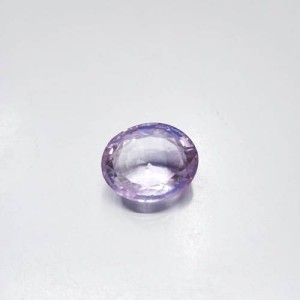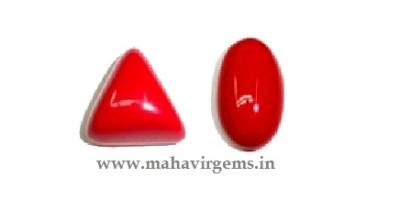Lavender Quartz (Rose-de-france)
Lavender quartz, also known as lavender amethyst or lavender
rose quartz, is a beautiful and rare gemstone known for its soothing color. It
is a type of quartz with a light to medium purplish-pink color, often with a
beautiful lavender hue. Let's examine lavender quartz for more details
Lavender quartz is a precious stone belonging to the quartz
family, which includes many famous varieties such as Citrine, Purple amethyst,
Prasiolite (green quartz), rose
quartz (rosy quartz), tiger's eye, aventurine, jasper, and many more. What makes
Lavender Quartz special is its unique color, a soft mauve with a
purplish-to-pink tone. This beautiful color is usually caused by the presence
of particles or radiation during the formation of the gemstone. Lavender quartz
is often found in crystal form and can be cut and polished into a variety of
shapes for use in jewelry.
Meaning and
Popularity: Here are the reasons why lavender quartz is popular in the
stone world:
1.
Calming Energy: Lavender Quartz is associated
with the qualities of peace, calm, and relaxation. It is generally considered a
stone of peace and happiness. Many people believe that wearing or carrying
lavender quartz helps reduce stress and anxiety.
2.
Natural beauty: Its soft and attractive color
makes lavender quartz a sought-after stone for jewelry lovers. It complements a
variety of metal arrangements and can be used in modern and vintage-style
jewelry.
3.
Rare and Special: Although amethyst and rose
quartz are common, lavender quartz is rare, making it more common and prized by
collectors and gem lovers.
Historical and
Cultural Associations of this gemstone: Because of its rarity in
availability Natural Lavender quartz fails to have as rich a historical and
cultural legacy as its near relatives like rose quartz & amethyst. However,
it does share some important associations:
1.
Amethyst Connection: A type of purple quartz,
lavender quartz is sometimes considered a close relative of amethyst, which has
a long history of use in jewelry and is a symbol of alertness and clarity of
mind.
2.
Healing and Spiritual Uses: Like many other
types of quartz, lavender quartz is believed to have healing and spiritual
benefits. Quartz crystals have been used throughout culture for their
energy-balancing properties.
3.
Modern spirituality: In recent years lavender
quartz healing has gained popularity among those interested in meditation and
crystal healing. It is often used in spiritual practices designed to promote
inner peace and emotional balance.
In summary, lavender quartz is a beautiful stone known for
its calming color and associated metaphysical powers. Although it does not have
the same historical and cultural connotations as other gemstones, its unique
beauty and perceived distress continue to make it a popular choice among
gemstones, diamond jewelry, and spirituality.
Geological Structure:
Like many other quartz varieties, lavender quartz is formed
by geological processes deep in the earth's crust. It usually consists of the
following steps:
Rocks: Quartz crystals, including lavender quartz, derived
from magma or hydrothermal fluids. This liquid can carry dissolved silica
(SiO2) and other contaminants.
1.
Cooling
and crystallization: When magma or hydrothermal fluids cool and
solidify, they form open cavities or veins in the bedrock. During this process,
silica and other substances crystallize to form quartz crystals. Special
conditions such as pressure, temperature and cold during cooling can affect the
color and transparency of the crystals.
2.
Radiation:
In the case of lavender quartz, the delicate lavender or red hue is often
attributed to natural radiation. This radiation can create color flecks in the
quartz, resulting in lavender quartz's unique color signature.
3.
Mineral
Combinations: Lavender quartz is sometimes associated with other
minerals of similar origin, such as amethyst (green quartz) and rose quartz
(red quartz).
Chemical Composition
and Mineral Properties:
The chemical composition of lavender quartz, like all types
of quartz, is basically silicon dioxide (SiO2). Mineral properties include:
·
Hardness:
Lilac quartz has a Mohs hardness of 7, which means it is durable and scratch
resistant. This makes it suitable for use in jewelry.
·
Color:
As the name suggests, lavender quartz comes in a soft, soft lavender or
pinkish-red color, and the way it is used often varies. This color is due to
the particles and radiation at the time it was created.
·
Luster:
Lilac Quartz exhibits a vitreous (glass) shine when polished.
·
Transparency:
Varies from translucent to transparent, depending on the specific model and its
transparency.
·
Cleavage:
There is no cleavage in Lavender Quartz, that is, it does not break on certain
planes like other minerals. Instead, it breaks in a shell-like manner and forms
a smooth, curved surface when broken.
Varieties:
1.
Lavender
Quartz, although best known for its beautiful lavender color, can exhibit
variety and variations. Brand name based on its actual color and transparency.
Some variations include:
2.
Lavender
Amethyst: This type of lavender quartz is often associated with amethyst
due to its purple hue. It may exhibit deeper purple shades mixed with lavender,
blurring the line between the two varieties.
3.
Lavender
Rose Quartz: Some lavender quartz specimens may display a pinkish hue in
addition to the lavender, earning them the name “lavender rose quartz.”
4.
Lavender
Blue Quartz: In rarer cases, lavender quartz can display a blue undertone,
creating a captivating lavender-blue coloration.
5.
Lavender
Quartz with Rutile: Rutile needles, or thin inclusions of the mineral
rutile, can be present in lavender quartz, adding unique visual interest to the
gemstone.
These variations in color and transparency make lavender
quartz a versatile and attractive choice for jewelers, designers, and decorative article
manufacturers, with each specimen showcasing its distinct beauty.
Physical
Characteristics & Features of Natural Lavender Quartz
Lavender quartz exhibits several physical characteristics
that determine its appearance and value:
Color Variations:
Lavender quartz is primarily known for its soft, pastel
lavender or pinkish-purple color. However, the intensity and shade of lavender
can vary significantly among different specimens.
Factors such as the presence of trace elements (iron,
manganese, and titanium), irradiation, and the specific geological conditions
during its formation influence the coloration of lavender quartz.
Some lavender quartz specimens may also display hints of
blue or gray, contributing to color variations.
Clarity and
Transparency:
Lavender quartz can range from translucent to transparent.
The clarity of a lavender quartz specimen depends on the presence of internal
flaws, inclusions, or impurities.
Inclusions may include mineral inclusions, fractures, or
other imperfections. Generally, gem-quality lavender quartz is valued for its
high transparency and minimal inclusions.
Size and Carat Weight
Considerations:
Lavender quartz, like other gemstones, can come in various
sizes, from small cabochons to large faceted gemstones.
Carat weight, a measure of a gemstone’s size, directly
affects its value. Larger lavender quartz gemstones are rarer and more
expensive than smaller lavender quartz gemstones.
Characteristics that
affect the color used:
There are many factors that affect the use and color of
lavender quartz:
Closed Elements: Many
traces of chemical elements such as iron, manganese, and titanium can share
Quartz's unique color. In the case of lavender quartz, this expression gives it
purple and lavender tones.
Radiation: Natural radiation during
the formation of the gemstone changes the color of lavender quartz. It is
believed to be largely responsible for the gemstone's lavender and red color.
Geological Conditions: Specific geological conditions, including pressure and
temperature, play an important role in determining the color intensity and
saturation of lavender quartz. Changes in these conditions can result in
different shades of lavender.
Heat treatment:
Some lavender quartz samples can be heat treated to improve their color. This
treatment enhances existing lavender tones.
Inclusions: The
presence of minerals or rutile needles can affect the color of lavender quartz.
Inclusions scatter light and affect the overall appearance of the stone.
Save30%
Lavender Quartz Oval Faceted - 15.65 carats
Lavender Quartz (Rose de France) Oval Faceted - 15.65 caratsBeautiful pale lavender Oval shaped face..
₹12,630.50 ₹18,044.00 Ex Tax: ₹12,599.00


